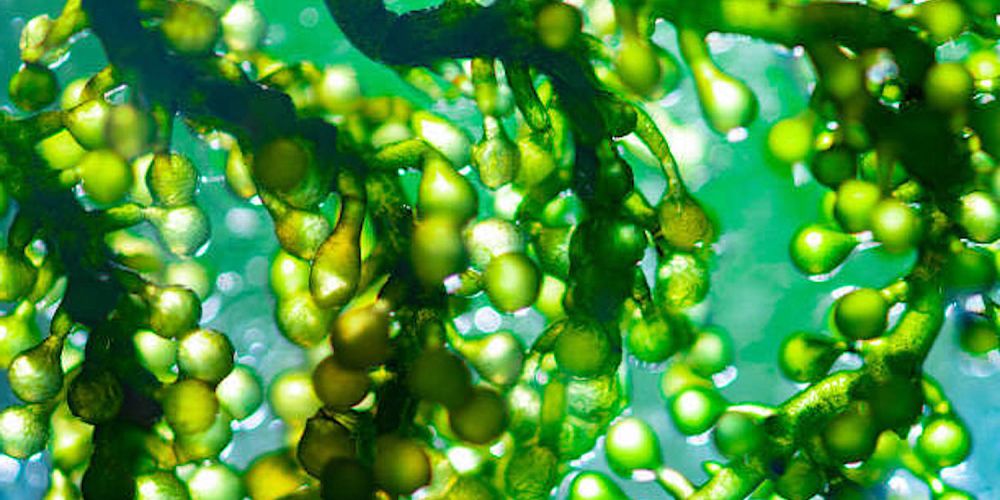How Macroalgae Can Help Address Climate Change

Macroalgae, commonly referred to as seaweed, indeed represent a promising opportunity for addressing climate change and creating sustainable, regenerative biopolymer-based products. Here are the top ten ways in which macroalgae can play a pivotal role in both carbon sequestration and the development of renewable, sustainable, and biodegradable industrial products such as packaging and textiles:
Carbon Sequestration:
Macroalgae are highly efficient at absorbing carbon dioxide (CO2) during photosynthesis. They can sequester significant amounts of carbon from the atmosphere, helping to mitigate CO2 levels, which is a major contributor to climate change. The carbon stored in macroalgae biomass remains locked up until the seaweed decomposes or is utilized in products, thus acting as a carbon sink.
Biodegradable Packaging:
Seaweed-based biopolymers can replace traditional plastic packaging materials. These biodegradable materials can reduce the carbon footprint of packaging by minimizing the use of fossil fuels and reducing plastic waste. Seaweed packaging can also be designed to degrade quickly in natural environments.
Textile Production:
Seaweed fibers can be used as a sustainable alternative to conventional textiles. Seaweed textiles have a lower environmental impact and can be cultivated using fewer resources, such as water and land. They are biodegradable, reducing the long-term environmental impact associated with textile waste.
Bio-Based Plastics:
Seaweed-derived biopolymers can be used to produce bio-based plastics. These plastics are renewable, biodegradable, and have a lower carbon footprint compared to petroleum-based plastics. They can replace plastics in various applications, including single-use items like utensils and straws.
Aquaculture and Integrated Multi-Trophic Aquaculture (IMTA):
Seaweed can be cultivated alongside fish and shellfish in IMTA systems. In these systems, seaweed helps absorb excess nutrients like nitrogen and phosphorus from the water, reducing the risk of harmful algal blooms. This integrated approach improves overall ecosystem health and reduces greenhouse gas emissions from aquaculture.
Biofuel Production:
Seaweed can be converted into biofuels such as bioethanol and biodiesel. These biofuels can replace fossil fuels in transportation and energy production, leading to lower greenhouse gas emissions.
Soil Amendment:
Seaweed-based biodegradable materials can be used as soil amendments to improve soil structure and fertility. Enhanced soil health can increase carbon sequestration in agricultural lands and reduce the need for synthetic fertilizers.
Carbon Credits and Offsets:
The carbon sequestration potential of seaweed cultivation can be quantified and monetized through carbon credits and offsets. This provides financial incentives for seaweed farming, further encouraging its adoption.
Marine Ecosystem Health:
By absorbing excess nutrients and providing habitat for marine life, seaweed cultivation contributes to healthier coastal ecosystems. This can indirectly mitigate climate change by preserving the resilience of coastal ecosystems, which act as carbon sinks.
Reducing Plastic Pollution:
Seaweed-based materials can replace plastic products in various applications, helping to reduce plastic pollution in oceans and coastal environments. Plastic pollution exacerbates climate change through its contribution to carbon emissions from the petrochemical industry.
BLU3 has determined that macroalgae, particularly seaweed, can play a multifaceted role in addressing climate change. Through carbon sequestration, the development of sustainable biodegradable materials, and improvements in ecosystem health, seaweed offers a comprehensive approach to mitigating climate change while promoting sustainable industries and reducing environmental impacts.









